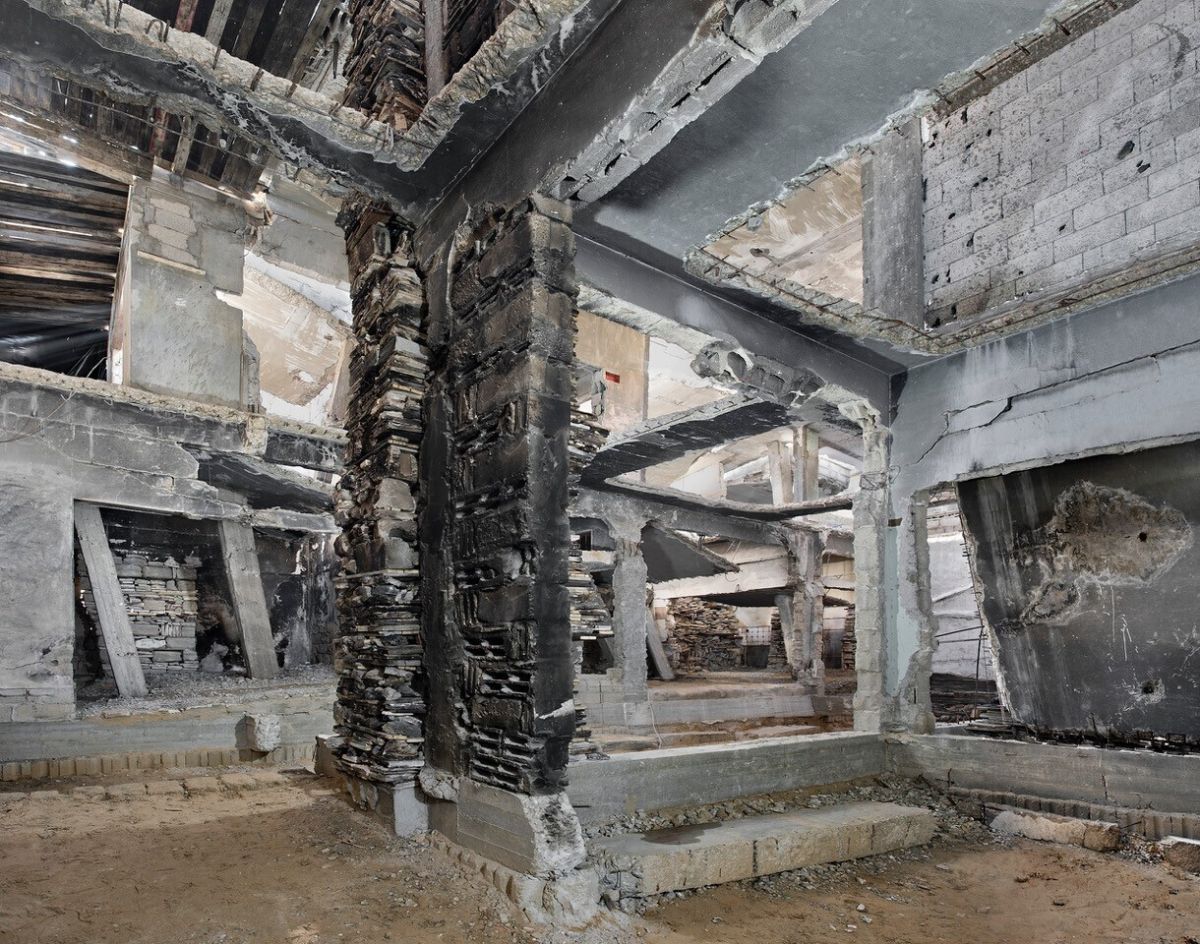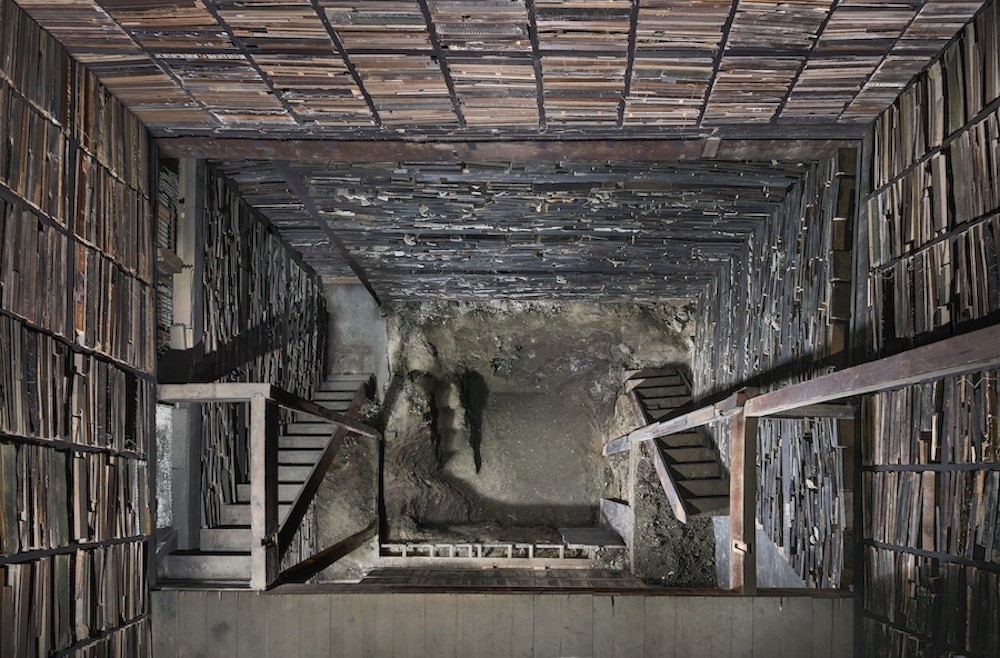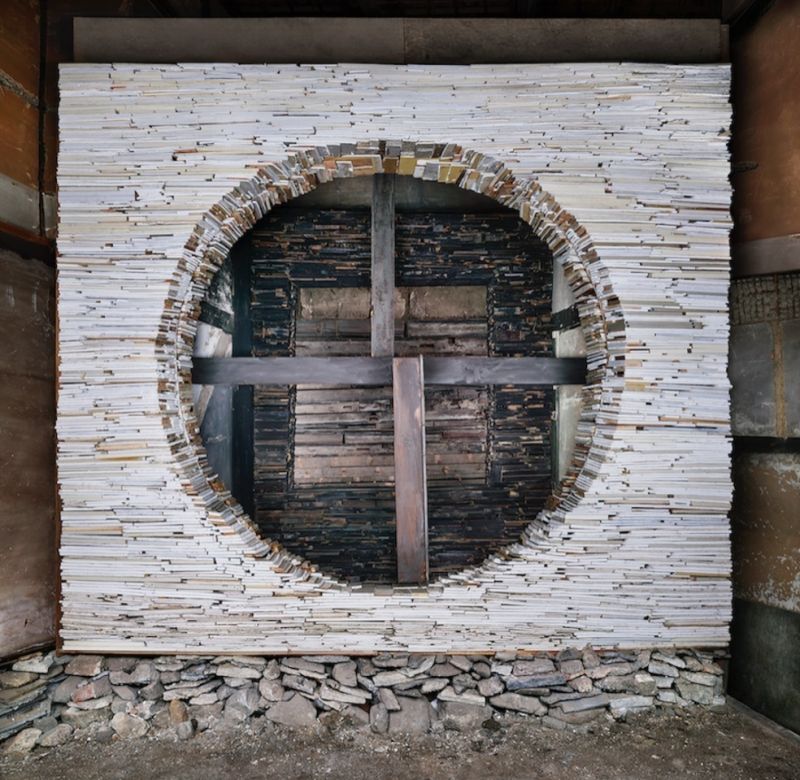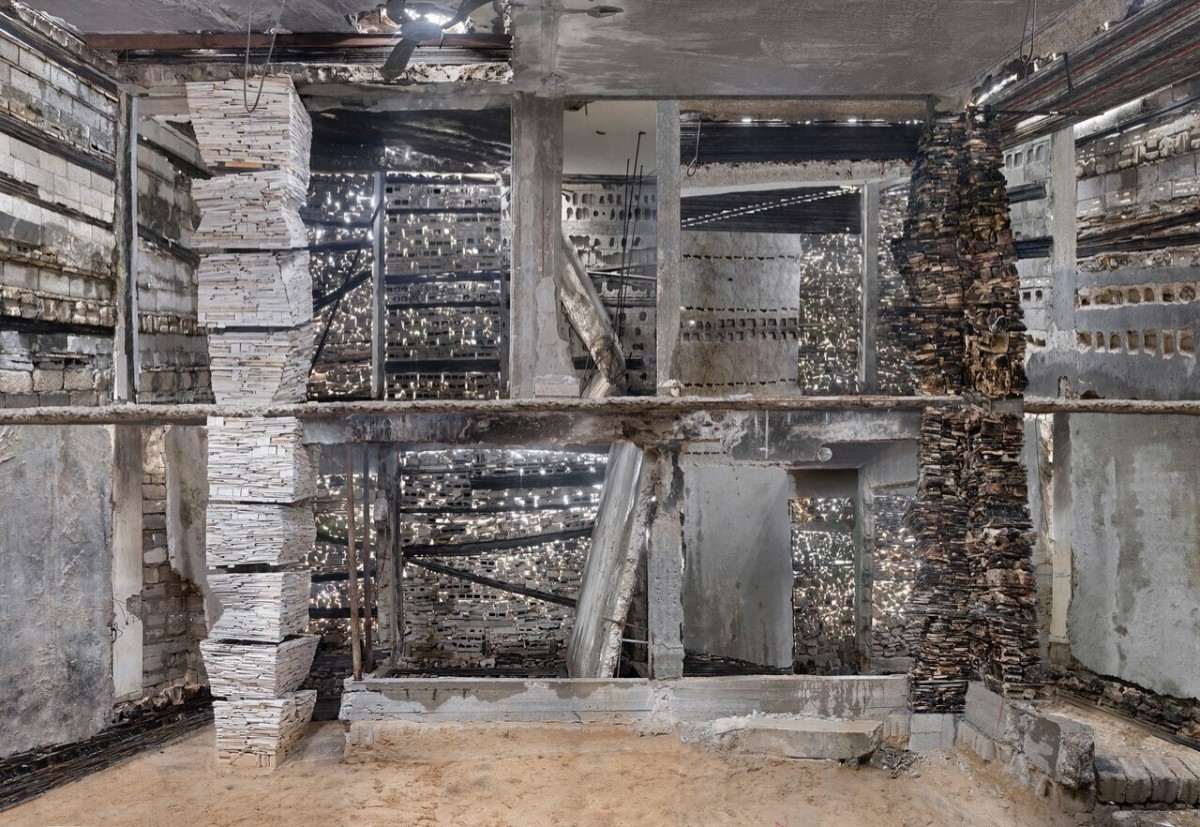MARJAN TEEUWEN | DESTROYED HOUSE

Solo Exhibition Marjan Teeuwen | Destroyed House
Face to face with great depths
Demolished buildings are Marjan Teeuwen’s (Venlo, 1953) field of activity, and her audience also encounters clutter, construction waste, and dust. Under the title Destroyed House, Teeuwen creates sculptures of discarded buildings in the Netherlands and abroad.
She has worked in Rotterdam-Zuid and Amsterdam-Noord, but also in politically sensitive areas across the border, from Siberia to Gaza. She recently worked in Kyoto, where she annexed some traditional wooden houses that are threatened by the encroaching concrete jungle. She was able to transform them and then opened them up as sculptures to the public: an ode to materials, craftsmanship, and neglected glory. Teeuwen makes photographic works of spatial installations, which in turn are irrevocably slated for demolition. Destroyed House is a multifaceted monument to the human condition, which appears rock-hard, but is as transitory as life itself.
This art is extreme – the size and scale, but also the physical, psychological, and social scope. It’s as if Teeuwen explores the building’s memory. Houses which once gave homes to countless different lives are taken inside out. All the wood, stone, concrete, plaster, and other sheet metal is sawn or beaten into pieces, insofar as it hasn’t already been destroyed by violence.
Then it’s rearranged, colour by colour, part by part. Teeuwen piles up matter on matter. Her architectural compositions are as raw as they are meticulous, full of vistas that reveal the beauty of danger. The audience stands on the edge of an excavated foundation, face to face with great depths, or looking straight through a carcass of floors. Only the very edges of a wall stand upright, around a gaping hole that, like the eye of a giant, exposes and sees through everything. Perhaps this reflects the domestic soul itself.
There’s no other way for her, Teeuwen tells us. It’s as if she has to turn everything upside down in a radical search for the origin of our destructive and constructive side – the two human opposites that cannot be overcome. She explains: “We make the most beautiful music, visual arts, literature, and architecture. We can create world cities. And still, we pass on traumas from generation to generation and cannot prevent recurring escalations. We struggle with the human condition, our limitations, and psychological pitfalls. My motivation is to get to the bottom of these extremes.”
In Gaza, she transformed the bombed-out family home of a father who lived there with the families of two sons. The attack had killed one of them. Beforehand, Teeuwen had wondered whether she, as a Western artist, was able to fulfil a role there. After all, she wasn’t there as a journalist, aid worker or politician. However, the answer from Gaza was clear: we need art to heal.
Teeuwen worked in a man’s world for three months – women were kept at a distance, and a woman in charge was considered unique. She transformed the destroyed house into a sculpture and monument. When it was finished, she could finally welcome the women from the surrounding area. “The work was received as a sign of hope and emancipation, and all the more so because I, as a woman, even with a handicap, had transformed their ruin into such a beautiful and meaningful place of remembrance.”
The series Destroyed House, Teeuwen’s life’s work, is a diabolical balancing act with an open ending, as the cycle of demolition and construction itself knows no end. Still, the photos that Teeuwen creates of it escape the tipping point. Here, chaos and order are evenly matched, in a radical reversal of the urge to destroy.
This exhibition is a collaboration with Bruce Silverstein Gallery in New York.
Text by Wilma Sütö.



